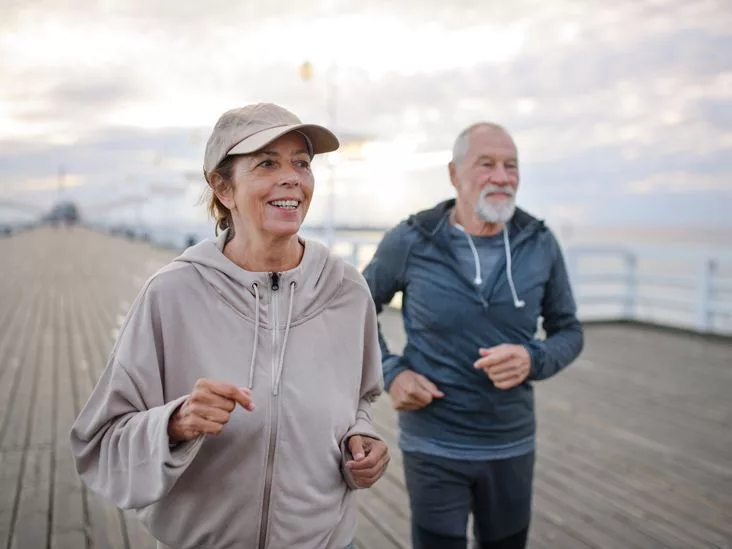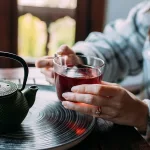Yes, you can lace up those shoes, hit the pavement, and feel the wind on your face—even if you’re 65, 70, or 80. The good news? Running is one of the simplest, most rewarding ways to stay healthy as we age, and you don’t need a marathon‑training guru to get started. Below is a friendly, step‑by‑step guide that covers everything from why running still matters to you, to the exact stretches that keep you injury‑free. Think of it as a senior running guide written by a friend who’s been there, stumbled a little, and kept moving forward.
Why Run for Seniors
There’s a myth that running is a “young‑person’s sport.” In reality, the benefits of a regular jog are just as powerful—if not more—when you’re older. Here’s a quick snapshot of what running can do for you.
What health benefits does running provide after 60?
Heart health and longevity
Running is a proven cardio workout that strengthens the heart, improves circulation, and helps keep blood pressure in check. According to a CDC report, adults over 60 who engage in regular aerobic activity cut their risk of heart disease by up to 30 %.
Bone density and joint flexibility
Weight‑bearing exercise like running stimulates bone growth, slowing the natural loss of bone density that can lead to osteoporosis. A Harvard study shows that consistent running can increase bone mineral density, especially in the hips and spine according to Harvard Health. And, contrary to popular belief, gentle jogging can actually lubricate the joints, giving you smoother movement.
Mental sharpness and mood boost
Running releases endorphins, the brain’s “feel‑good” chemicals. Many seniors report better sleep, reduced anxiety, and a clearer mind after a regular running routine. Think of it as a natural antidepressant that also helps keep dementia at bay.
How does running compare to other senior‑friendly cardio?
| Activity | Calories Burned (30 min) | Impact on Joints | Equipment Needed |
|---|---|---|---|
| Walking (brisk) | 150‑200 | Low | Comfortable shoes |
| Running (moderate) | 300‑350 | Moderate (good shoes help) | Running shoes, optional belt |
| Cycling (stationary) | 250‑300 | Very Low | Bike, monitor |
| Swimming | 200‑250 | None | Swimsuit, pool access |
Running burns more calories per minute than most alternatives, and the impact can be managed with proper footwear and smart training. If you’re comfortable on your knees and want a full‑body workout, it’s hard to beat a steady jog.
Assess Your Readiness
Before you sprint off, a quick health check helps keep the fun from turning into a doctor’s visit.
Should I see a doctor before I start?
Red‑flag conditions to discuss
- History of heart disease or hypertension
- Diagnosed osteoporosis or recent fractures
- Severe arthritis or chronic joint pain
- Unexplained shortness of breath
If any of these sound familiar, schedule a brief consult. Most physicians will clear you for low‑impact jogging after a quick exam and perhaps an electrocardiogram.
How do I gauge my current fitness level?
A simple “talk test”
Go for a 5‑minute walk at a comfortable pace. If you can hold a conversation without gasping, you’re ready for a gentle jog. If you feel winded, start with more walking and gradually introduce short running intervals.
What baseline metrics should I record?
- Resting heart rate (beats per minute)
- Blood pressure (systolic/diastolic)
- Average step count per day (use a phone or pedometer)
- Any pain or discomfort notes
Tracking these numbers over a few weeks will help you see progress and spot problems early.
Choose the Right Gear
Good gear is like a supportive friend—it makes the journey easier and safer.
Which running shoes suit seniors best?
Key features to look for
- Ample cushioning (especially in the heel)
- Low to moderate heel‑to‑toe drop (≤ 8 mm)
- Wide toe box so your toes can splay
- Stable midsole for those who overpronate
Brands such as Brooks, Asics, and New Balance have models designed for “neutral” or “stability” needs. When you try shoes on, stand up, wiggle your toes, and walk around for a couple of minutes—your foot should feel snug but not tight.
What clothing and accessories improve safety?
Moisture‑wicking and visibility
Choose lightweight, breathable fabrics that pull sweat away from the skin. In low‑light conditions, a reflective vest or a pair of LED‑accented shoes keeps you visible to drivers. A simple running belt or fanny pack can hold your phone, ID, and a small bottle of water—hand‑free and safe.
Build a Sustainable Training Plan
Think of your training plan as a friendly invitation, not a strict punishment.
How to start with a “walk‑run‑walk” approach?
2‑week starter schedule (5 days/week)
- Week 1: 5 min warm‑up walk, 1 min jog, 2 min walk – repeat 4 times (≈ 20 min total)
- Week 2: 5 min warm‑up walk, 2 min jog, 2 min walk – repeat 4 times (≈ 25 min total)
Progress at a pace that feels challenging but enjoyable. If a minute feels too long, stay at the previous level a few more days before stepping up.
How much can I increase mileage each week?
The 10 % rule
Boost total weekly mileage by no more than 10 % while adding a “cut‑back” day—one day with a shorter, easier run. For example, if you run 10 km in week 1, aim for 11 km in week 2, keeping one low‑intensity session at 5 km.
What strength‑training moves support running?
Senior‑friendly routine (2‑3 times/week)
- Glute bridges – 2 sets × 12 reps
- Calf raises on a step – 2 sets × 15 reps
- Seated leg extensions – 2 sets × 10 reps
- Knee‑friendly core plank (knees on floor) – 2 × 20‑30 sec
- Single‑leg balance (hold onto a chair) – 2 × 15 sec each side
These moves reinforce the muscles that protect your joints and improve running efficiency.
Injury‑Prevention Strategies (Safe Running Seniors)
Staying injury‑free is a mix of listening to your body and giving it the right tools.
Which injuries are most common for older runners?
Typical culprits
- Stress fractures (often from sudden mileage spikes)
- Plantar fasciitis (heel pain, especially after morning runs)
- Knee osteoarthritis or patellofemoral pain
- Shin splints (tibial stress)
These issues show up when we ignore warning signs or run on worn‑out shoes. A quick look at the Propel Physiotherapy guide breaks down each injury and offers rehab tips.
How to stretch effectively before & after runs?
Dynamic warm‑up (pre‑run)
- Leg swings – 10 each side
- High knees – 30 seconds
- Walking lunges – 8 each leg
- Arm circles – 15 seconds forward & back
Static cool‑down (post‑run)
- Hamstring stretch – hold 30 seconds each leg
- Calf stretch against a wall – 30 seconds each side
- Quadriceps pull (standing, using a chair for balance) – 30 seconds each leg
- Hip flexor stretch – 30 seconds each side
When should I “back off” and rest?
Red‑flag pain signals
- Sharp, stabbing pain that doesn’t subside after a few minutes
- Persistent soreness that worsens rather than improves over 48 hours
- Swelling, bruising, or loss of range of motion
If any of these appear, stop running immediately, apply ice, and give the area at least 48 hours of rest. When you feel ready, resume with a reduced intensity or a walk‑only day.
Nutrition & Hydration for Older Runners
Fueling your body wisely makes every stride feel smoother.
What should I eat before a morning run?
Light carb‑protein combo
A half‑banana with a tablespoon of nut butter, or a slice of whole‑grain toast topped with a thin layer of cottage cheese, provides quick energy without a heavy stomach. Aim to eat 30‑45 minutes before heading out.
How much water/electrolytes do I need?
Basic rule of thumb
Drink 16‑20 oz (≈ 500‑600 ml) of water about 30 minutes before you start. During runs longer than 45 minutes, sip 4‑6 oz every 15 minutes. On hot days, consider a low‑sugar electrolyte tablet to replace sodium lost in sweat.
Recovery nutrition for bone & muscle health
Protein‑rich snack within 2 hours
A Greek‑yogurt parfait with berries, or a small protein shake (20‑30 g protein), supports muscle repair. Pair it with calcium‑rich foods like fortified almond milk or a slice of cheese to aid bone recovery.
Stay Motivated & Socially Connected
Running is more fun when you have a buddy or a goal to chase.
How to find a senior running group near me?
Local resources
Check community center bulletin boards, local parks, or senior‑center newsletters. Many libraries host “walk‑run” meet‑ups on Saturday mornings. You can also search online for “senior running club” plus your city name; many groups use free apps like Strava to coordinate routes.
Setting realistic short‑term goals
SMART goal examples
- Run 1 km without stopping in 4 weeks.
- Complete a 5 K charity walk/run in 3 months.
- Improve average pace by 15 seconds per km over the next 8 weeks.
Keep the goals specific, measurable, achievable, relevant, and time‑bound. Celebrate each milestone with a small reward—maybe a new pair of socks or a post‑run coffee.
Wrap‑Up: Your Path Forward
Running as a senior isn’t about out‑pacing the 20‑year‑olds; it’s about feeling stronger, more independent, and a little bit lighter every day. By checking your health, picking the right shoes, starting with gentle intervals, and honoring your body’s signals, you’ll build a habit that lasts for years.
Ready to take the first step? Grab a pair of supportive shoes, try the 2‑week walk‑run schedule, and share how it felt in the comments below. If you have questions about stretching, gear, or finding a local group, I’m here to help. Let’s keep moving forward—together.


















Leave a Reply
You must be logged in to post a comment.